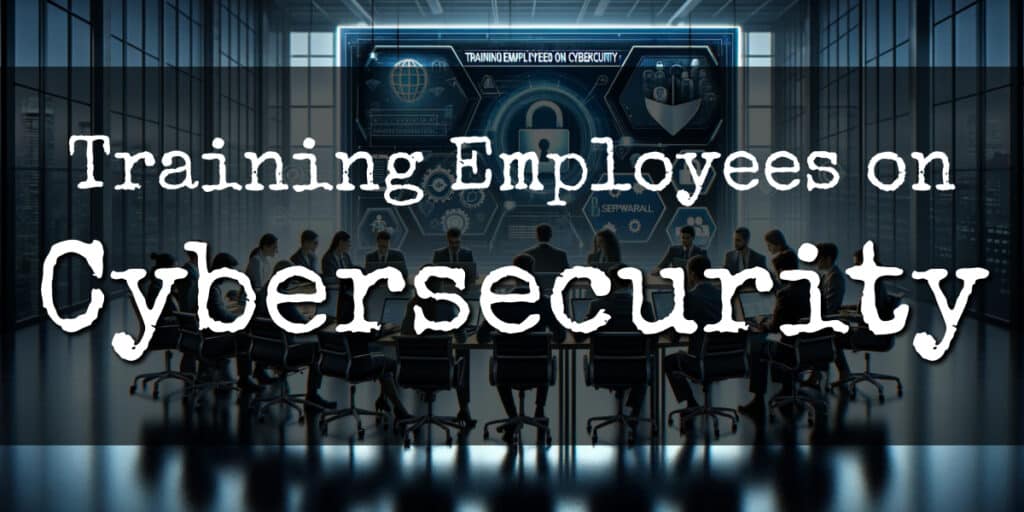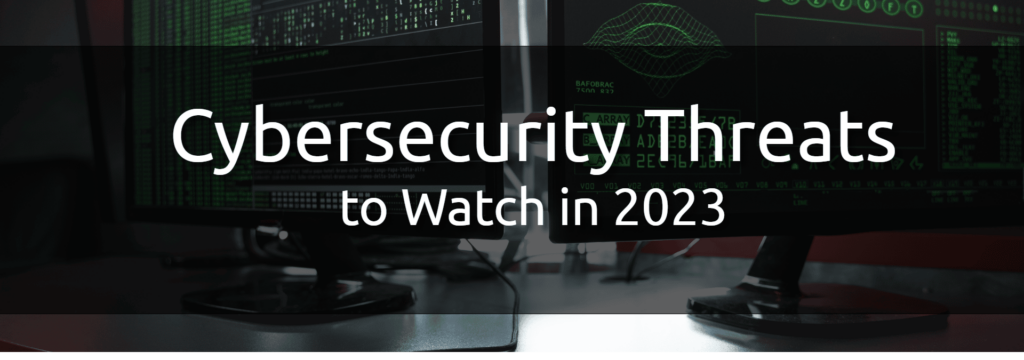Imagine this: you’re in a room with your organization’s most important asset. It’s not the CEO or the state-of-the-art server room – it’s your employees. In the ever-intensifying world of cyber threats, each employee, with their emails and internet browsing, holds the keys to the kingdom.
Training employees on cybersecurity is crucial. Cyberspace is a battlefield, and your employees are the frontline defenders. They are your human firewall.
On This Page:
- The Essentials of Cybersecurity Training for Employees
- Crafting an Engaging Cybersecurity Education Program
- Implementing Effective Security Practices
- Empowering Remote Workers with Cybersecurity Best Practices
- Measuring the Impact of Cybersecurity Training
- Elevating Your Security Posture with Advanced Training Techniques
- Summary
- Frequently Asked Questions
The Essentials of Cybersecurity Training for Employees

Employee security awareness training plays a pivotal role in combating cyber threats. But what makes cybersecurity awareness training employees on cybersecurity so significant? The reason is simple: a well-informed employee is your best line of defense against cyber threats.
Identifying Common Cyber Threats
It’s necessary to keep employees updated about prevalent cyber threats, including emerging threats. After all, we can only defend against the dangers we know. Phishing emails, ransomware, smishing, vishing, and social engineering scams are just a few examples of the threats that employees need to be aware of.
Building a Culture of Security Awareness
It goes beyond simple training; it’s about fostering a culture that prioritizes cybersecurity awareness. When security awareness becomes second nature to your employees, they become your organization’s watchful guardians. Encouraging open communication, sharing best practices, and rewarding proactive behavior will help foster a security-aware culture that can act as your organization’s immune system against cyber threats.
Tailoring Training to Different Roles
Cybersecurity training doesn’t follow a universal approach. To maximize effectiveness, it’s important to tailor the training to suit different roles within the organization. After all, your IT team faces different cyber threats compared to your HR department.
Customizing the training material to address the unique needs and risks associated with each role ensures that everyone gets the information that’s most relevant to them.
Crafting an Engaging Cybersecurity Education Program

Once the essentials are established, we can focus on the delivery method of the cybersecurity training. It’s not just about what you teach, but how you teach it. A compelling cybersecurity education program integrates real-world examples, interactive learning methods, and continual learning opportunities to emphasize the significance of cybersecurity.
Utilizing Real World Examples
Real-world examples significantly enhance cybersecurity training. By showing employees the real impact and costs of cyber attacks, you can drive home the urgency of protecting data and systems. This approach makes the training more tangible and helps employees understand the practical application and potential risks they may face.
Interactive Learning Techniques
Learning extends beyond just reading or listening; it involves practical application. Incorporating interactive learning techniques like simulations and hands-on activities can make cybersecurity training much more engaging. These approaches can help employees remember the cybersecurity concepts they’re learning and apply them in real-life scenarios.
Ongoing Learning Opportunities
As the realm of cybersecurity is constantly changing, your employee training programs should adapt accordingly. Offering ongoing learning opportunities, such as regular updates on new threats and refresher courses, can help your employees stay ahead of the curve.
Implementing Effective Security Practices

Having established the significance of cybersecurity training and ways to make it engaging, it’s time to focus on implementing effective security practices.
This involves secure password management, recognizing and reporting phishing attempts, and the safe handling of sensitive information to ensure data security.
Secure Password Management
Don’t underestimate the power of a strong password. It’s the first line of defense against unauthorized access to your accounts. Employees should use a combination of uppercase and lowercase letters, numbers, and special characters, and passwords should be at least 12-15 characters in length. Read our guide on creating a strong password here.
Password managers can also help generate and store strong, unique passwords.
Recognizing and Reporting Phishing Attempts
Phishing attempts are a common tactic used by cybercriminals to steal sensitive information, potentially leading to a data breach. Equip your employees with the knowledge to recognize such attempts.
Creating a reporting mechanism for such attempts can also help your organization stay ahead of these threats.
Safe Handling of Sensitive Information
Handling sensitive information is a key part of many employees’ roles. Training them on the safe handling of such information can prevent potential data breaches. This includes using encryption for data protection and having clear policies on how to handle and store sensitive data.
Empowering Remote Workers with Cybersecurity Best Practices

Given the surge in remote work, cybersecurity training needs to adjust to accommodate employees working from home and traveling.
Securing Mobile Devices and Networks
In the era of remote working, mobile devices and home networks have become an extension of the company’s infrastructure. Therefore, securing them is crucial. Encourage employees to use strong passwords for their devices and home networks, and consider implementing a VPN for added security.
Avoiding Technical Jargon
Communication is key in cybersecurity training. Avoiding technical jargon can make cybersecurity concepts more accessible to all employees, not just the tech-savvy ones. This ensures that everyone can understand the training materials and apply the cybersecurity practices in their day-to-day tasks.
Personal Responsibility and Accountability
Finally, fostering a sense of personal responsibility and accountability is central to cybersecurity. When employees understand that they play a crucial role in protecting the organization, they are more likely to follow best practices. Encourage employees to take ownership of their actions and understand the repercussions of ignoring cybersecurity protocols.
Measuring the Impact of Cybersecurity Training

To establish the effectiveness of your cybersecurity training, measure its impact. This can be achieved by tracking progress with phishing simulators, analyzing engagement and retention, and reviewing incident response and reporting procedures.
Tracking Progress with Phishing Simulators
Phishing simulators are an effective instrument for assessing the impact of cybersecurity training. By mimicking real-life phishing attacks, these simulators can assess the employees’ ability to recognize and mitigate such threats.
Analyzing Engagement and Retention
The rates of engagement and retention provide a clear understanding of the acceptance and comprehension of your cybersecurity training. Higher engagement suggests that the training is interesting and relevant to the employees, while high retention rates indicate effective learning and understanding of the concepts.
Reviewing Incident Response and Reporting
Reviewing incident response and reporting procedures can provide valuable insights into how well your employees are equipped to handle cybersecurity incidents. This can also help identify areas for improvement in the training program.
Elevating Your Security Posture with Advanced Training Techniques
Cybersecurity is not a single occurrence. To maintain a lead, it’s significant to enhance your security posture consistently. This can be accomplished via:
Advanced training methods like specialized training for security teams
Cybersecurity bootcamps
Certifications
Leveraging Federal Virtual Training Resources
Specialized Training for Security Teams
A robust security team serves as your organization’s primary defense against cyber threats. Providing them with specialized training enhances their skills and knowledge, allowing them to better protect the organization from cyber threats.
Cybersecurity Bootcamps and Certifications
Cybersecurity bootcamps and certifications provide concentrated and directed learning opportunities for employees. By attending these bootcamps, employees can:
Develop a deep understanding of cybersecurity concepts and practices
Gain hands-on experience with real-world scenarios
Learn from industry experts and professionals
Stay up-to-date with the latest trends and technologies in cybersecurity awareness
Federal Virtual Training Environment and Resources
The Federal Virtual Training Environment (or FedVTE) provides an abundance of free cybersecurity training materials and courses. This resource can be a valuable tool in enhancing your staff’s cybersecurity knowledge and skills.
Summary
Cybersecurity training is not a luxury—it’s a necessity. In a world where cyber threats are evolving at an alarming rate, the human firewall is your first line of defense. By providing comprehensive and engaging cybersecurity training, fostering a culture of security awareness, and implementing effective security practices, you empower your employees to play a pivotal role in defending your organization.
Remember, cybersecurity is a shared responsibility, and every employee has a role to play.
Frequently Asked Questions
Why educate employees on cybersecurity?
Cybersecurity training helps employees understand common cyber threats, reduce the risk of successful cyber attacks, recognize key indicators of a threat, and take the necessary steps to protect confidential information. Training employees on cybersecurity is critical for protecting a business from data breaches and other cybersecurity incidents.
How often should employees be trained on cybersecurity?
Employees should be trained on cybersecurity every four to six months to ensure that their knowledge is up-to-date and relevant. Regular training helps employees remember how to spot phishing emails and other potential security threats.
How can we measure the impact of cybersecurity training?
Measuring the impact of cybersecurity training can be done by assessing progress with phishing simulators, evaluating engagement and retention rates, and examining incident response and reporting procedures.



